Stan Lee, the World’s Greatest Comic Book Writer: 1922-2018
I never really thought Stan Lee would die. I’ve been saying for years that as long as there was a single nickel to be squeezed, Stan the Man would be making his cameo and taking his executive producer credit and raking in the long green.
I guess we now live in a nickleless universe, and there will be a blank spot somewhere around the margins of the next Marvel cinematic blockbuster. Stan Lee took a last intrepid leap into the Negative Zone on Monday, November 12. He was 95.
As W.S. Gilbert wrote long ago, “I often think it’s comical/How nature always does contrive/That every boy and every gal/That’s born into the world alive/Is either a little Liberal/Or else a little Conservative!” Gilbert and Sullivan never wrote a comic opera about superheroes (oh that they had!), but the observation applies as much to comic books as it does to politics. It’s certainly possible to appreciate both, but at the end of the day you’re either Marvel or you’re DC.
When I was a kid in the 60’s and 70’s, in the prime of my comic book buying and reading years, I was DC all the way. I had hundreds of comics, but very few were Marvels. There was something about them that I just didn’t trust. The combination of self-mockery and over-the-top rhetoric put me off. The goofy syntax and leather-lunged self-promotion that screamed from a thousand Gil Kane-drawn covers proclaimed that unlike the solid, stolid DC products, these weren’t serious comic books. (You know what I mean — titles like “Whence Comes the Werebeast!!” and banners proclaiming that the story is “Another Mighty Masterpiece in the Munificent Marvel Manner!!” and stuff like that.)
And then those nutty letters columns and “bullpen” pages filled with agonizingly awful alliteration, and the whacky fan clubs and promotions (F.O.O.M. — Friends of Ol’ Marvel or the M.M.M.S. — the Merry Marvel Marching Society) that were all so… so undignified. If the DC universe (of course no one called conglomerations of comic book characters anything so pretentious as “universes” back then) was a meeting of the Rotary Club, then the Marvel universe was a loud frat party where you-know-what was being passed around.
So I was a straight-laced kid. Sue me.
It all started to change (my comic book attitudes, I mean, not that other stuff) when I was about twelve years old and I bought another kid’s whole comic collection — probably three or four hundred issues… and a lot of them were Marvel. After I finished sorting them alphabetically and filing them in with my own comics (yes, I was a highly organized child, and I kept a very neat room, too), I started to dip into my acquisitions. I read my “new” DC books first, of course… but then, slowly, cautiously, skeptically, I began to pull a out a Marvel here and there, and at first I had my prejudices confirmed (early 70’s Iron Man was not one of the peaks of 20th century comic book creativity, if you didn’t already know). But then, I took a look at the big bunch of Fantastic Four issues I had bought.
Fantastic Four 57
A pop-culture angel must have been looking over my shoulder that day, because the first Fantastic Four I opened was number 57, “Enter… Doctor Doom!” the first issue of a four part story that tells how Doctor Doom steals the Silver Surfer’s powers and uses them to force Reed, Sue, Johnny, and Ben to quaff “The Dismal Dregs of Defeat!” before having the villainous tables turned in as rousing a reversal as you’ll ever read.
Now look — I still love DC. If forced to choose, I would say that the Silver Age Superman is and will forever be the greatest superhero of them all. But what it said on the top of those Fantastic Fours — “The World’s Greatest Comic Magazine!” — I was flabbergasted to discover that it was true. I still consider that four issue epic (numbers 57-60) to be the best superhero story ever, and there are dozens of Fantastic Four issues before and after that are almost as terrific. The wide-screen action, the quirky characterization and offbeat, often funny dialogue, the expansive, cosmic storylines — these were comics on a different scale than anything DC was producing in those years.
From that point on, I plunged without hesitation into my Marvels, and I began to see the method behind the madness. It was clear that someone was very consciously and cannily shaping those books in a way that made them as different as possible from DC; some Latverian mastermind had succeeded in making Marvel Wagnerian grand opera to DC’s AM top 40.
Fantastic Four 58
That someone was Stan Lee, the man who, along with a host of collaborators, chief among them Jack Kirby and Steve Ditko, created the Marvel universe — a term that even I can now use without feeling ridiculous.
During the 60’s as Marvel’s editor-in-chief and as the writer on the Fantastic Four and Captain America and Thor and The X-Men and The Avengers and Spider-Man and Doctor Strange and on and on, Stan Lee did nothing less than initiate a ruthless conquest of American culture that continues unabated to this day. Under Lee’s guidance, Marvel comics – hip, flip, ironic, self-aware, self-referential – reflected, and in their own small way, helped shape their era in a way that DC never did, and Lee did it all while firmly establishing himself as (all caps are essential here) THE WORLD’S GREATEST COMIC BOOK WRITER!
There are two question to be dealt with here, however. First, haven’t people disputed Lee’s creative contribution? And also, isn’t being the world’s greatest comic book writer sort of like being the greatest stand-up comic in Bavaria? I mean, “comic book” and “writer” in the same sentence? Please.
First things first. From the early 60’s on Lee and his artist collaborators were working with what became known as the “Marvel Method,” in which the artist works from a story synopsis — often hashed out verbally with the writer, in person or on the phone — instead of a full script with breakdowns and layouts dictated by the writer, as was standard at DC. When the artist is finished, the writer gets the pages back and then does the dialogue. This way of working was necessary because of the ridiculous number of books Lee was writing every month; it simply wasn’t feasible to do full scripts in that situation. The Marvel Method gives artists much more creative autonomy, and essentially makes them co-plotters.
There is no doubt that this greater artistic freedom caused bitterness and resentment among some Marvel artists, primarily Jack Kirby and Steve Ditko, because they never felt that they were getting their fair share of credit for their creations. (Despite their contributions to the stories, Lee was the only credited writer, and Lee’s brash, used-car salesman persona surely didn’t help the situation.) Kirby and Ditko were also increasingly aware that they weren’t being fairly compensated financially, a shameful situation that Lee had virtually nothing to do with. (He worked for Marvel, he didn’t own it, though Lee being Lee he of course negotiated very nice monetary compensation for himself.)
The mysteries of the Lee-Kirby and Lee-Ditko collaborations will likely remain forever veiled. It is beyond dispute that Stan Lee was a hot dog and a publicity hound and that for years Kirby and Ditko didn’t receive the recognition to which they were entitled. To the media Stan Lee was the public face of Marvel, and while that has led to accusations that he was a credit hog, in truth it was often more a case of people ascribing to Lee a larger share of credit than he was due than of his greedily grabbing it for himself. In those high-spirited bullpen pages that I thought were so silly, Lee regularly goes out of his way to blow a loud horn for his co-laborers, all in the Munificent Marvel Manner. Certainly DC never boosted inkers and letterers and even the company receptionist (“Fabulous Flo Steinberg!”) the way Lee did at Marvel. Flo even found her way into some comics stories, as did Kirby himself on more than one occasion.
Fabulous Flo as drawn by Jack Kirby
In any case, the Lee-Kirby-Ditko credit wars are largely over, and the artists are now universally acclaimed as great comics writers in their own right. Indeed, it’s arguable that in recent years the pendulum swung too far the other way, and that Lee ended by not getting as much credit for the great Marvel comics as he actually deserved. What can be said is that whatever the creative logistics, the three men did their best work in collaboration with each other; separately, they never reached the heights they did together. (And if you cite Kirby’s “Fourth World” work at DC, I will concede its greatness, but if I had to sacrifice either all of Kirby’s 70’s DC work or his peak 60’s Marvel work, I literally wouldn’t even have to think about it. Goodbye, Forever People. Adios, Mister Miracle. Hasta la vista, Kamandi. I suspect most comic lovers would — regretfully — make the same choice.)
Lee and Kirby
And as for the joke of someone who churns out comic books being worthy of being called a writer, you read those Fantastic Four issues that so entranced me, or any other Lee-penned pages from Marvel’s great Silver Age era. The intricate plotting and perfect pacing (done with Kirby and Ditko, of course), the crackling dialogue (all Lee’s own), the characters that grab you and involve you and even move you as no four-color figures ever had before, the ever-expanding scale and heightened sense of drama, the sheer exuberant inventiveness, page after page of things that had never been done before, stretching the medium every month, every issue… well, if that’s not writing, I don’t know what is.
Steve Ditko
Do you want to know the real joke? In his youth and early manhood, Stan Lee desperately wanted to be a “serious” writer — you know, mainstream books, respectable stuff. If he had achieved that ambition, how likely is it that millions would now be mourning his death? How many people would have even heard of him?
Stan Lee in his prime
Fortunately for him, ambitions don’t fill the refrigerator; you have to make a living, and so Stan found himself detoured into the world of comics. As so often happens, the detour became a parking lot, and he spent all of his long professional life there. And by doing the day to day job of cranking out stories for comic books, and trying to make them a little livelier, a little more grown-up, a little more literate, a little less formulaic (to make ends meet until he could get time to do some real writing), Stan Lee became rich and famous and influential and loved (mostly), and just about every person in this nation of three hundred million has been touched by his creations in some way, and if you add in all the people in all the corners of the world where Marvel characters have reached, the number has to be in the billions. It’s cosmic. Stan bestrode this narrow world like a colossus… or a Galactus. In his field at least, we will not see his like again.
In the Negative Zone
For Stanley Leiber of West 98th Street, New York, the son of poor immigrant parents, to become a giant, an icon, a shaper of our world, a tycoon, an impresario of global culture… that’s as astounding and inspiring a transformation as bespectacled Bruce Banner changing into the Incredible Hulk, or timid Peter Parker becoming the Amazing Spider-Man.
Improbably, unexpectedly, it was a great and glorious and successful career, like some wild story out of the comic books. To it, we can only say as Stan the Man himself would say: Excelsior! And… ’nuff said.
Thomas Parker is a native Southern Californian and a lifelong science fiction, fantasy, and mystery fan. When not corrupting the next generation as a fourth grade teacher, he collects Roger Corman movies, Silver Age comic books, Ace doubles, and despairing looks from his wife. His last article for us was a review of the film First Man.
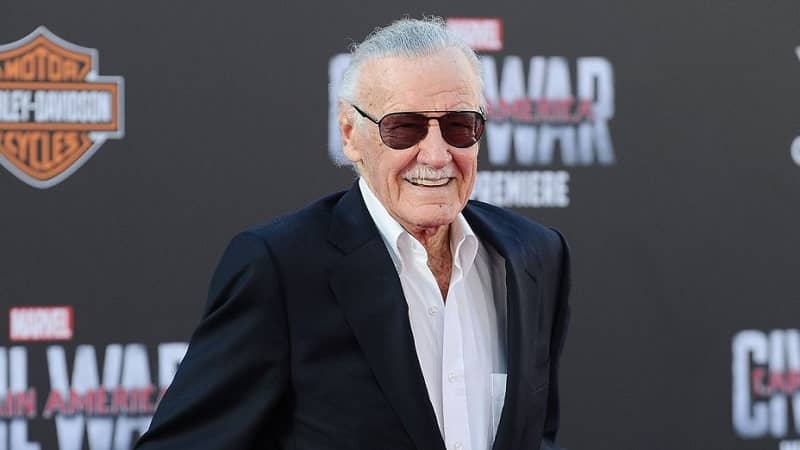
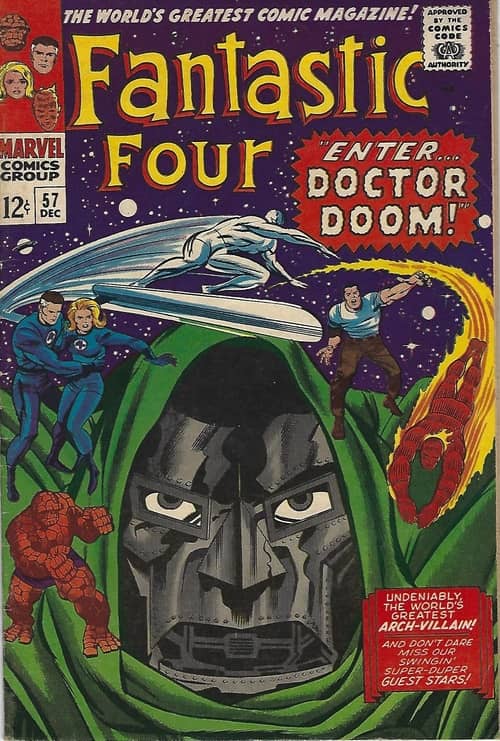
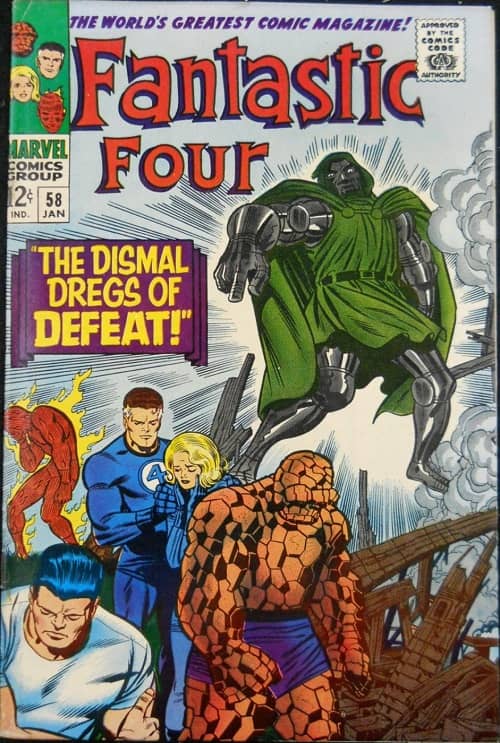
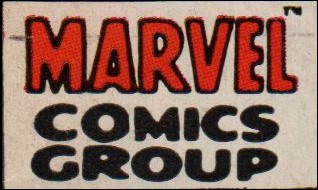
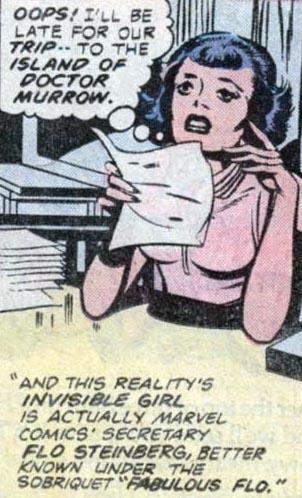
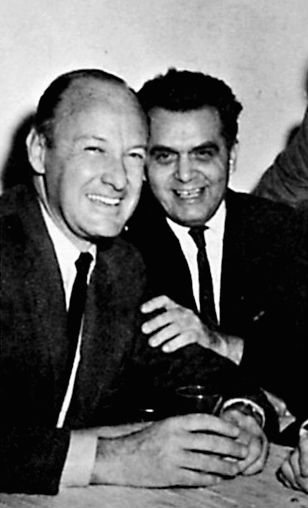
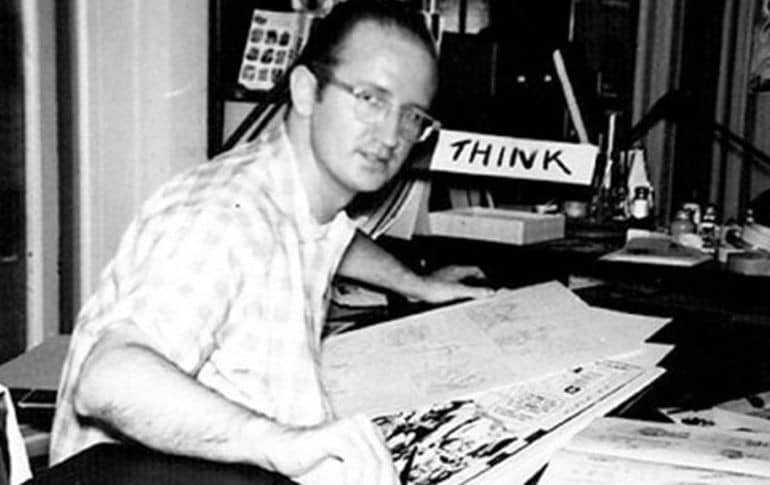
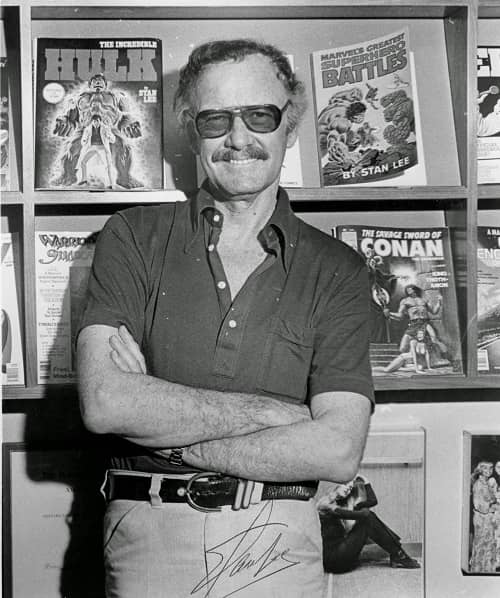
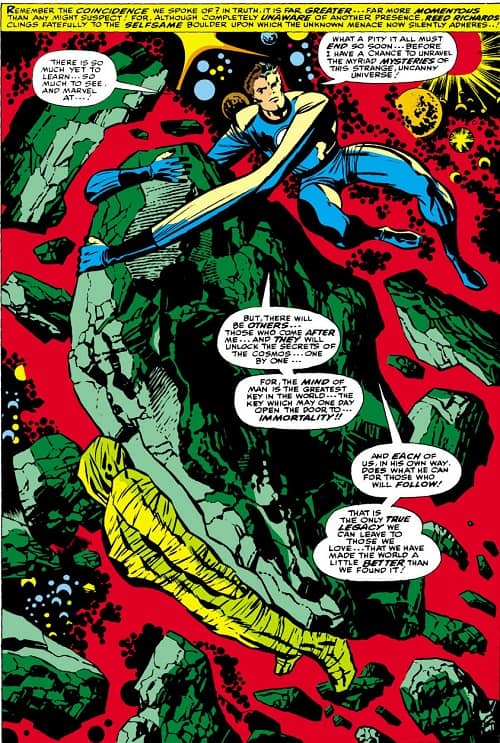
What a great summary of very complicated life.
I starting reading Marvel comics heavily almost five years ago. Comics take up the majority of what I read today.
Thanks to Marvel Unlimited I’ve been able to read through most of the Silver Age material. I started with FF #1 and i’m up to 1971, skipping issues/characters that don’t interest me.
I’ve read a lot about the relationship between Lee, Kirby, and Ditko. There are a few givens that we know about the situation, but really everyone just has to make their own opinion after read the material.
It seems to me like Lee was good at running with an idea once someone else laid the groundwork. While its different from what Ditko was doing, the quality of the Lee/Romita Spider-Man issues is proof of Stan’s abilities more than any other title.
The Demon is the only DC Kirby material I’ve read (its good) but it feels more like the FF and Thor material than Ditko’s later work feels like Spider-Man.
I guess what i’m getting at is that Stan did a good job of making the whole line feel cohesive and had some great ideas in the titles he really cared about. But the ideas that really pushed Marvel forward were spearheaded by Kirby/Ditko.
> While its different from what Ditko was doing, the quality of the Lee/Romita
> Spider-Man issues is proof of Stan’s abilities more than any other title.
Glenn,
I agree completely. The Lee/Ditko Spider-Man may be the single greatest storyline in comics, bar none, but when Ditko left and John Romita picked up art duties, there was no perceived dip in quality (or in continuity). The Lee/Romita run is peak Spider-Man, or very close to it. If there was ever any doubt of Lee’s contribution, that sealed it for me.
I admit I haven’t actually read a lot of Lee’s issues — when I started reading comics in the mid-70s, I don’t think he was doing much actual writing any more, and reprints weren’t really a thing; my Fantastic Four is John Byrne’s — but the characters he created defined major parts of my life.
I don’t know, as much as I enjoy Stan and Romita’s Spider-Man, it’s still a pretty clear step down from Ditko’s, IMO. OTOH, if Ditko had been allowed to continue on Spider-Man, the series would have probably developed VERY differently considering his deepening commitment to Objectivist philosophy. It would have probably been more off-putting to most readers in the long term.
My take on Stan is that he was a great scripter – everyone who’s ever tried to imitate his voice has just ended up looking stupid – a smart editor and a great marketing personality. All those add up to quite a bit, but whenever I would read Stan’s work apart from Kirby and Ditko, I noticed that the series got less creative, had less gripping plots, and generally settled into a lot of wheelspinning. I always get this impression of what I’ve heard of how the Beach Boys used to work, Brian Wilson pushing the boundaries farther and farther while Mike Love would be going, “Why don’t we just keep playing the old hits?”
It wasn’t just those plots that the artists deserved credit for when they moved into the “Marvel method” era. In many cases it seems like Stan Lee didn’t have a whole lot of input in the creation of some of the characters and best known story arcs. Apparently Stan didn’t like Kirby’s Silver Surfer concept and Dr Strange seems to have little input from Stan.
I also think that the Romita era of Spiderman was a definite step down.
Stan Lee probably deserves most credit for the marketing, cheerleading and unifying the Marvel line. If you want to know Stan Lee the writer, you might be better looking at his teen humor and various genre anthology comics from the 50s.
World’s Greatest Comic Writer? I doubt comics critics would rate him that high. Alan Moore, Jaime Hernandez, Pat Mills, Kazuo Koike, Harvey Pekar and many others would be far ahead.
One of the biggest sore spots is how reluctant he seemed to even call the artists co-creators and that he stood against the Kirby family in court. And there’s a lot more.
Certainly in terms of character depth and polish and thematic ambition people like Alan Moore and Frank Miller are far ahead of Lee, but they couldn’t even have started down that trail if Lee hadn’t, in his more modest way, gone there first. A trail can be blazed only once. It’s why many critics call Cervantes the greatest of all novelists, even though any mass market paperback of today is a hundred times slicker than Don Quixote.